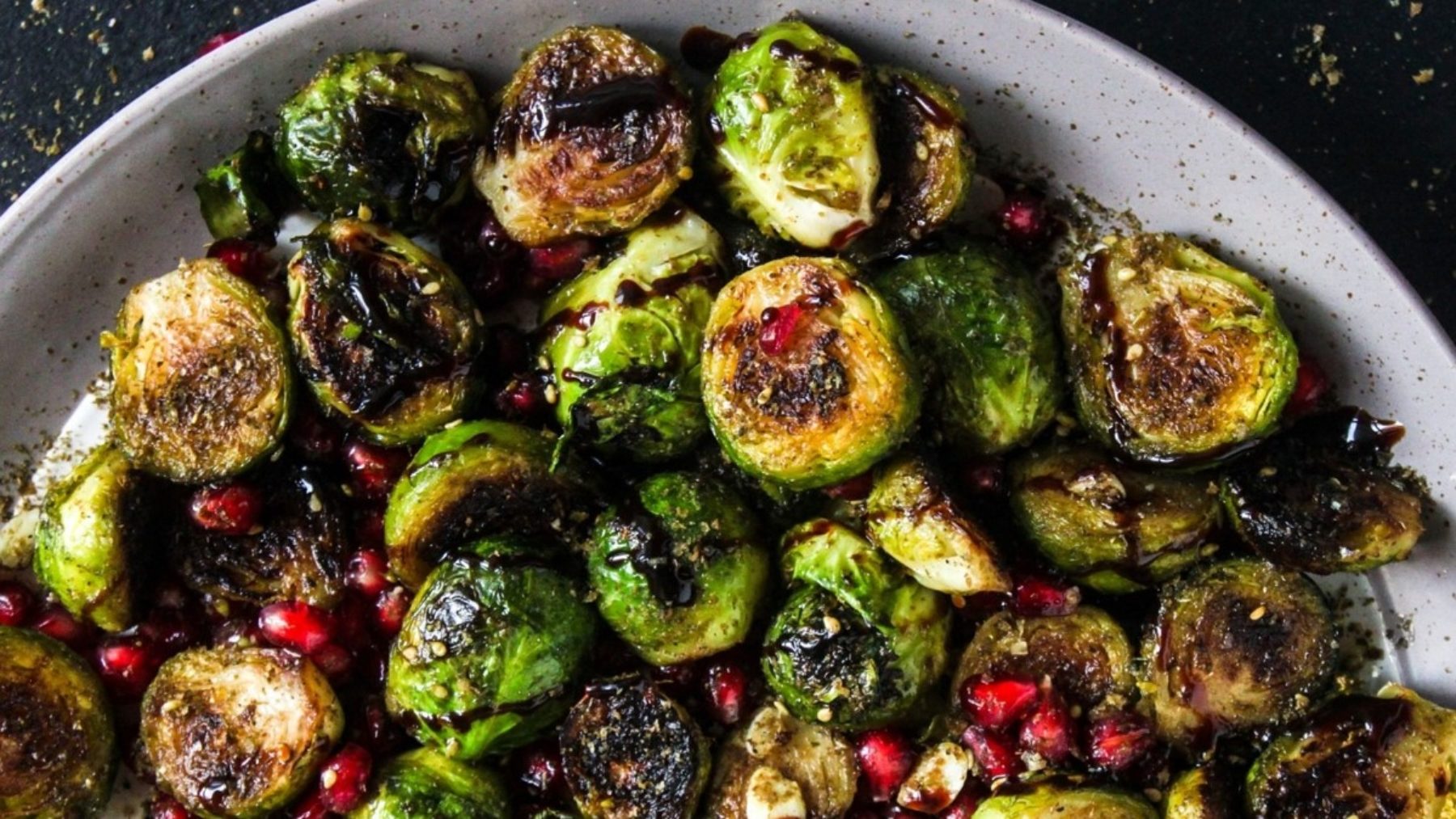How to Make Any Vegetable Taste Delicious
Rarely the star of the show, vegetables are often looked upon as a necessary accompaniment to a meal. And that’s a shame. Because with minimal effort, any home cook can make them taste really darn delicious.
You don’t need to do much to vegetables. There’s no need to deep fry them or dip them in chocolate or smother them in a cheesy sauce. And you definitely don’t want to boil or steam them into oblivion. When it comes to getting the most out of your vegetables, simple cooking is best, and you should aim to accentuate their natural flavor, rather than hide it.

Learn all the easy ways you can make any vegetable—zucchini, cucumber, carrot, beet, Brussels sprouts, kale, cauliflower—the best thing on the plate.
Add Fresh Herbs and Citrus
A quick way to make any vegetable taste better is to add fresh herbs or citrus. A sprinkling of chopped basil, a few sprigs of cilantro, or a squeeze of lime juice can elevate an otherwise ordinary plate of food.
Blend into a Smoothie
Want to make any vegetable taste delicious in only five seconds? Add it to a blender with some ice, juice or plant-milk, and fruit. Besides serving as a quick and easy meal option, a smoothie made with fresh vegetables, fresh or frozen fruit, and other smoothie add-ins like protein powder, flax seed, or spirulina can give you a nice nutrient boost.
Bring the Fire
Grilling and roasting are excellent ways to heighten the natural flavor of vegetables. Ingredients like carrots, Brussels sprouts, parsnips, and beets become sweeter and caramelized after roasting, while throwing slices of eggplant, zucchini, and bell pepper on the grill will bring out a smokier taste.
Buy Locally and Seasonally
The easiest way to get the most out of your fruits and vegetables is to buy locally and seasonally. In-season produce is often sweeter, more flavorful, bigger, and less expensive. In the spring and summer, try foods like blueberries, watermelon, peaches, zucchinis, cucumbers, tomatoes, salad greens, and bell peppers. In the fall and winter, look to eat more apples, grapes, sweet potatoes, broccoli, beets, and cauliflower.
Combine Salty and Sweet
An underutilized duo, a salty-sugary combination can add some excitement to ordinary veggies. A little bit of honey with sweet potatoes, maple syrup with butternut squash, and balsamic glaze with Brussels sprouts are just a few divine sweet and savory pairings.
Experiment with Umami
Ingredients like tomato paste, nutritional yeast, soy sauce, and miso are rich in umami and can help create a depth of flavor in your vegetable dishes. You can add them into soups, dressings, sauces, or stir-fries. New to the concept of umami? No problem, check out our list of plant-based ingredients loaded with umami.
Get Creative
Jerk tofu tacos? Buffalo cauliflower wings? Black bean burgers? Let your imagination run wild. Vegetables are a blank canvas that be transformed into a limitless range of dishes. Don’t be afraid to experiment with different cooking techniques, ingredients, and flavor profiles.
Season Aggressively
Using different seasonings can completely transform your plant-based cooking. Spices like chile powder, curry, smoked paprika, cinnamon, cumin, and black pepper can do wonders for vegetables. And never forget the most important seasoning: salt (just remember to add a little bit at a time and keep tasting).
Serve with Dips
A crudité platter with ranch dressing is all well and good, but try to give those veggies a boost with some zippier dips. Smoky black bean, hummus, babaganoush, romesco sauce, and plant-based queso are all fun options.
Top with Sauce
Sauce is always boss, and this rings especially true when it comes to adding flavor to vegetables. A dollop of pesto, barbecue sauce, guacamole, or any one of these ten essential sauces can add a richness and tang that vegetables sometimes lack on their own.
Treat like Meat
Imbuing vegetables with meat-like texture and flavor can make them more appealing to a broader range of taste preferences. Forming vegetables into patties or “steaks” can give them the appearance and mouthfeel of a meatier dish. You can also season them with traditional grilling spices or marinate in salad dressing before giving them a hard sear in a cast-iron skillet to recreate a classic meaty meal or satisfy your meat cravings.

Excerpt from Meatless Monday – https://www.mondaycampaigns.org/meatless-monday/how-to-make-any-vegetable-taste-delicious?utm_source=Healthy+Monday&utm_campaign=4516df5bdf-HM_2021_09_13&utm_medium=email&utm_term=0_b96fa14bc8-4516df5bdf-67735656